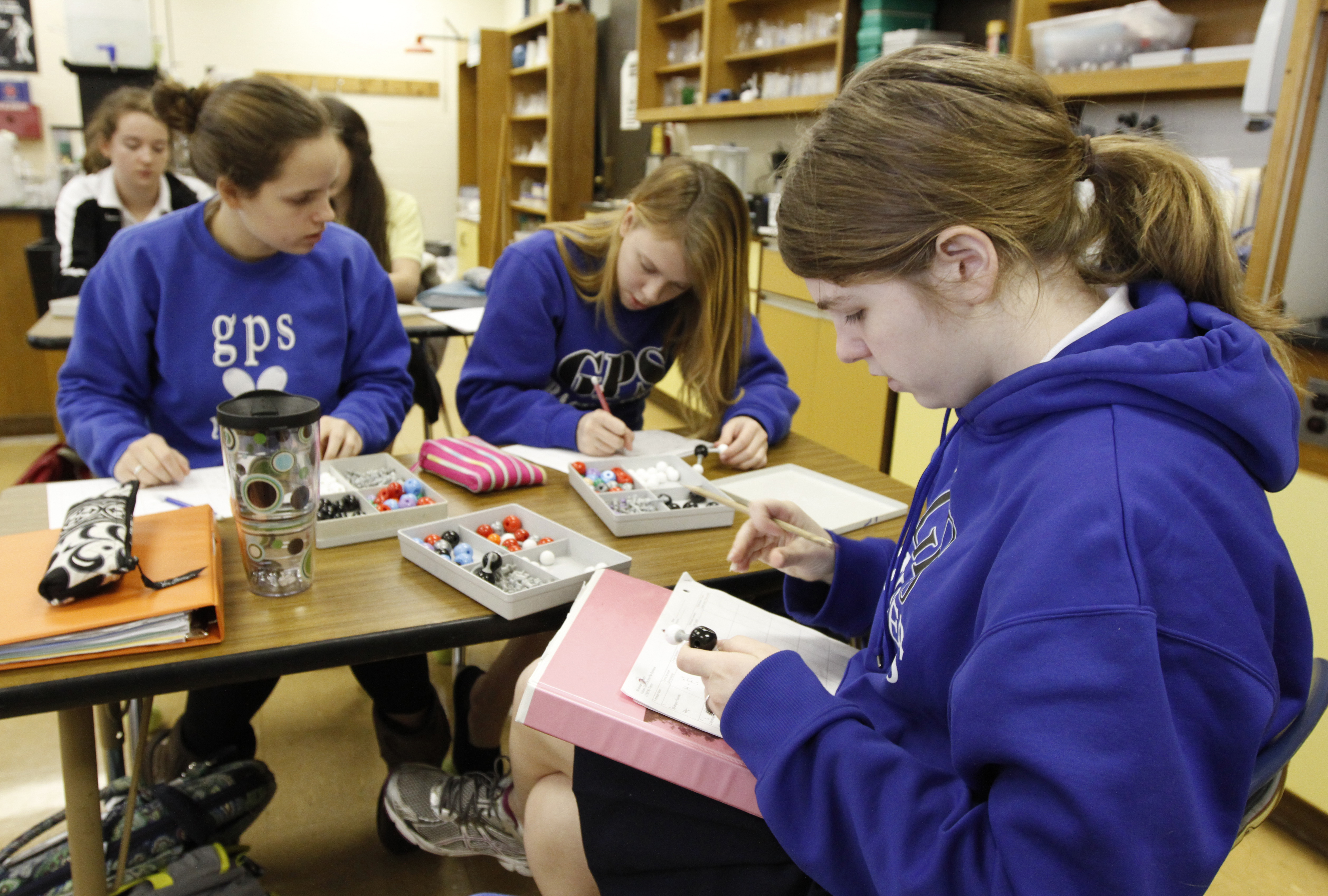ELSEWHERE ON THE WEBTo learn more about the flipped classroom model, visit www.flippedclassroom.com.WHAT IS IT?With a flipped classroom model, students watch prepared video lessons before coming to class, leaving more class time for students to clarify and apply concepts. In doing so, teachers say they're putting more responsibility on students to come to class prepared, but they're also making each class period more valuable. Two Colorado high school science teachers are said to have started the instructional model to make their classes more interactive.
As soon as the final student trickles in, Keith Sanders' honors chemistry class is ready to get to work building molecule models.
There's no need for a long lecture or PowerPoint presentation in this classroom. Because Sanders uses a teaching model called a flipped classroom, his students already are familiar with the day's lesson on molecular structure.
With the flipped instructional method, teachers don't dedicate most of the class period lecturing students as they might in more traditional teaching models. Rather, instructors record and upload lessons online for students to watch before coming to class.
The recorded lessons focus on the basics of new materials and concepts, allowing students to spend class periods asking questions, applying ideas and working in groups. Sanders is one of several teachers using the flipped model at Girls Preparatory School. The new approach is gaining ground in classrooms across the nation.
Teachers say it puts more responsibility on students but also frees up class time, making each class period more valuable.
"My goal was to get myself off the stage and put it more on them," Sanders said.
The concept has been lauded because it allows teachers more time to work with students, rather than talking at them. The model has received support from the Bill and Melinda Gates Foundation, which has funded the nonprofit Khan Academy's effort to upload thousands of free video lessons online.
Called vodcasts or screencasts at GPS, teachers record an oral lecture paired with a follow-along set of notes where they can work out problems and show examples to students.
GPS teachers note that a significant time investment is required to prepare the lessons, while national experts question whether such a model can be successful on a larger scale because of a lack of home Internet access among poorer students.
Because so much of the instruction takes place outside the classroom, students have a heightened responsibility to come to class prepared. But teachers say accountability is always an issue, whether it's reading an assigned text or studying for a test. And Sanders notes that such models have long been used by college professors.
Teacher Bryant Haynes finds the teaching model especially useful in his advanced placement physics course, which is jam-packed with material. When he taught in a more traditional style, he would spend nearly the entire class period lecturing.
"It was just a race through the curriculum," he said.
Now that the majority of lectures take place online, class time is more focused on reinforcing and applying concepts, he said. Students have more time to ask questions and work on examples, which helps their understanding of the material, Haynes said.
"What I find is the students are less harried in terms of their understanding," he said. "The time I have with them in the class is actually spent doing what they need me to do."
There are a few less-obvious benefits to relying on recorded lectures. A student who is absent from class still has access to the lesson online. And when school was out for a week last year because of snow, Haynes' advanced placement chemistry class still was able to progress through the curriculum.
"My AP chemistry class basically completed a whole unit on their own," he said. "That week was not lost to us."
The online lessons also can help students who are struggling with comprehension, because materials can be reviewed instantly or days later.
"If they don't get it in the screencast, they can actually pause and rewatch it," Haynes said.
Sophomore Anna Carroll said the ability to review a lecture is one of the greatest benefits of the online lessons.
"I like the vodcasts better because sometimes I zone out in class," she said.
Her flipped chemistry class is a stark change from other science courses she's had, she said.
"We'd come in and sit and watch a presentation while they explained," Carroll said.
Sophomore Taylor Pels said the flipped classroom model allows more time to work on assignments and projects, which helps reinforce the ideas covered in the textbook and lectures.
"I like it because I'm more familiar with the topic when I come to class," she said. "I already have a general idea of what's going on before we start applying it."

